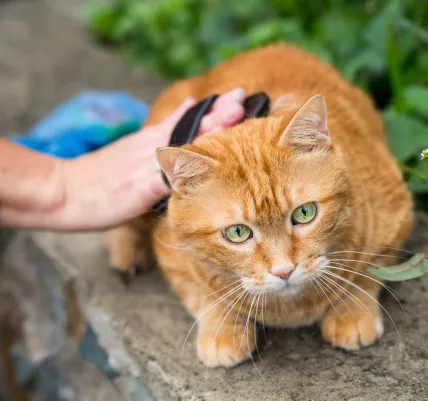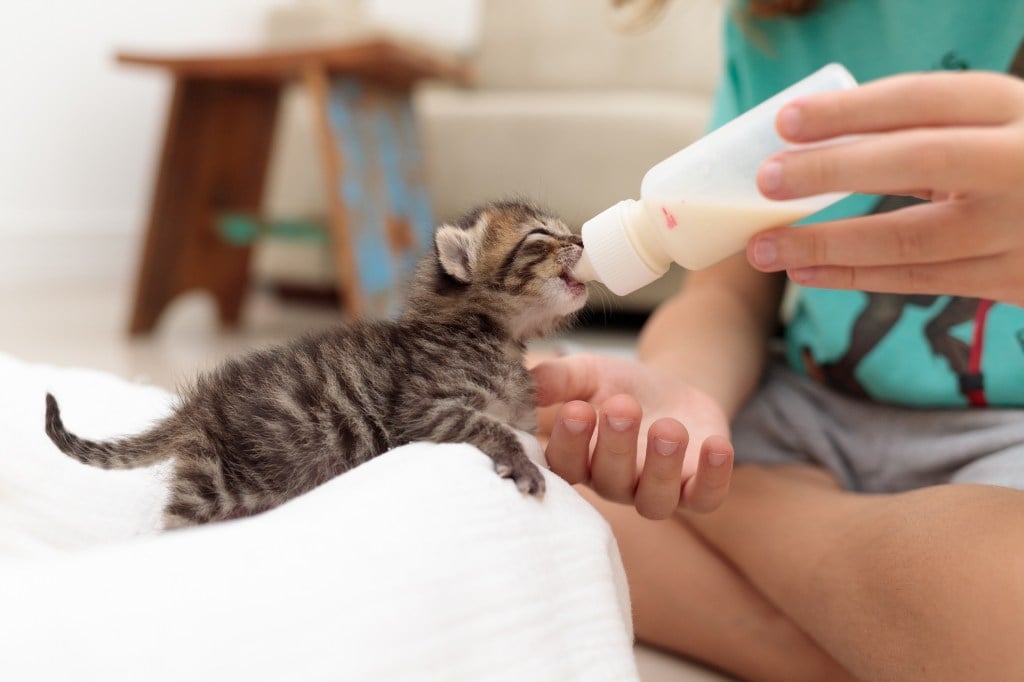Table of Contents
It’s the most wretched sound in the world, and every time you hear it coming you either quickly shield your eyes or look on in paralyzed horror until the highly dramatic ordeal is over. We’re talking about hairballs, of course, which are a fact of life for many cats and their pet parents. In the name of costly furniture, one-of-a-kind rugs, and just-laid carpet — and the sweet kitties who deal with hairballs on a more intimate basis — we’re discussing what they are, how they form, and ways to reduce them.
What’s a Hairball, Anyway?
Seeing a cat produce a hairball — whether it’s the first time or the fiftieth — is an alarming experience. They tend to hunch over, howl and moan, and then proceed to convulse as they push the hairball out of their body. This dense, wet “ball” of fur is actually long and cylindrical in appearance and can even be confused for feces if you’ve never seen one before. It has this tubular shape because it’s pushed up from the stomach, where the hair collects, and through the narrow passage of the esophagus.
What Causes Hairballs to Form?
Cats are famous for their grooming tendencies, and they sure do look shiny and well kept as a result. The downside is that licking all that fur with their rough, “sticky” tongues means that some of it invariably ends up being consumed. If it’s a minimal amount of hair, and if the cat’s body is well-equipped to break it down and pass it on through, the hair will travel through the digestive tract and out the other end.
Cats that groom more than others, and cats with medium or long hair, are more prone to developing hairballs. This is because there’s too much hair to break down and it as a result accumulates in the stomach, where it’s turned into a matted “ball.” When the body decides it’s ready to heave-ho said hairball, up it comes. For some cats this can occur on a weekly basis, for some it can be monthly, and for others once a year (or never if they’re lucky).
Are Hairballs Ever a Source of Concern?
Hairballs are very common and are rarely a major source of concern. In fact, your cat’s body was built to process them! That said, hairballs can be uncomfortable for your kitty — especially if they’re frequent. In rare cases hairballs can grow so large that they become difficult to pass or throw up.
If your cat continues to make gagging sounds or appears as if she’s trying to vomit a hairball but cannot, it’s imperative to visit your vet immediately. This is also true if your cat experiences diarrhea or constipation and the time has gone longer than normal between hairball hacks. (If your cat has diarrhea, constipation, or vomiting you should schedule a visit anyway.) We have had some claims for obstruction that were as a result from hairballs.
Again, hairballs are typical, and our aim isn’t to worry you about a normal cat function. Still, it’s always smart to be on the lookout.
Is it Possible to Prevent or Reduce Hairballs?
Whenever it’s possible to make our cats’ lives more comfortable, we should strive to do so. Hairballs are an area where we can do that. If your cat deals with hairballs regularly, there are ways you can reduce the frequency.
For starters, make it a habit to brush your cat daily (or at least a couple times a week). You can even keep brushes in convenient spots to make this task easier. Remember: whatever fur ends up in the trashcan won’t end up in their gut! Also, if your cat is an excessive groomer then try your best to curb this habit. That is easier said than done, but a playful “boop” for instance can help distract them from their licking ambitions.
Another way to reduce hairballs is to feed your cat food or treats that are specifically formulated to do so. These tend to be fibrous foods that allow the fur to pass more swiftly. Additionally, a hairball gel or paste will make your cat’s digestive tract more “slippery”, so that hair can also pass more easily. We recommend a natural, petroleum-free product.
As always, if you have any concerns about your cat and her hairballs, reach out to your veterinarian. They’ll be able to provide you with personalized guidance to ensure your kitty is living her best life.
The content is not intended to be a substitute for professional veterinarian advice, diagnosis, or treatment. Always seek the advice of your veterinarian or other qualified health provider with any questions you may have regarding a medical diagnosis, condition, or treatment options.
Unexpected accident or illness? That’s what we’re here for! Most pet parents rely on pet health insurance to pay up to 90% of their vet bills, so they can focus on what really matters: getting great health care for their pet. Find out more by getting a free quote.







